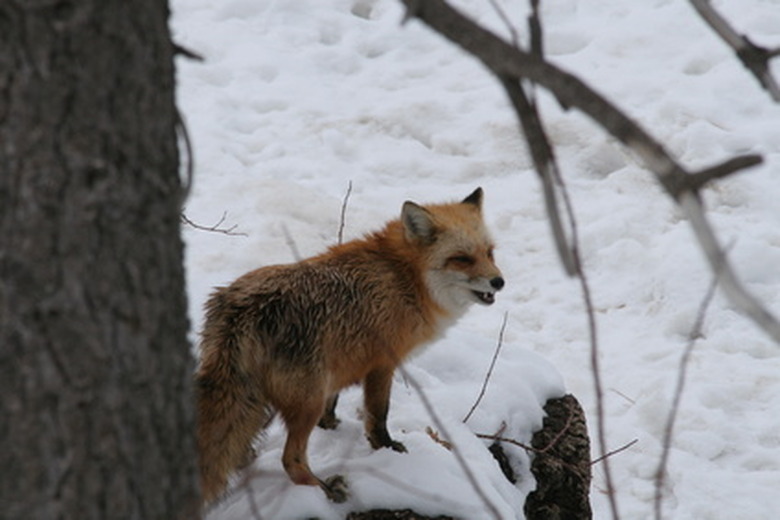How To Identify Animal Tracks Of A Fox
The red fox, kit fox, gray fox and arctic fox are all different species of foxes that inhabit parts of North America.
You might encounter their fox tracks after a light snow or in the mud or sand close to a river or stream. You can identify the tracks of a fox by the specific features of the prints along with other signs such as fox scat.
Step 1
A fox track shows the impressions of four toes on each foot, as well as claws. All canines have four toes per foot and cannot retract their claws like most feline species can.
At the base of each toe, when conditions are right, you will notice an imprint made by the claws.
Step 2
Note the geographical ranges of the North American fox species when trying to identify a fox. The range of the arctic fox overlaps only the range of the red fox in northern parts of Canada. The range of the gray fox overlaps that of the red fox in the eastern United States and a small portion of the Southwest.
The range of the kit fox overlaps that of the gray species in the Southwest and portions of the Great Plains. The kit fox lives in the same states as the red fox in portions of the Great Plains, Southwest, and Rocky Mountains.
Step 3
Search for the four oval toe imprints in front of a chevron-shaped heel pad when trying to identify fox tracks. In many cases, especially in winter when the fox has more hair to combat the effects of the cold, the toe imprints may be indistinct.
Step 4
Look for size differences between fox tracks in areas where different species overlap. The red fox leaves a track between 1.75 inches and 2.5 inches long, according to the Alderleaf Wilderness College website.
The gray fox has tracks a bit smaller, about 1.25 inches to 1.75 inches in length. The kit fox tracks are less than an inch and a half long, while the arctic species, although lighter than a red fox, has bigger feet, with the track as long as 3.5 inches.
Step 5
Examine any tracks you find that seem to run in a straight line. You usually discover fox tracks left in this manner, with one in front of the other, according to the "National Audubon Society Field Guide to Mammals." The distance between the tracks varies among species, because the length of the legs varies.
For example, the red fox has longer legs than the smaller kit and gray fox. Also note that often a fox steps with its hind foot right into the imprint left by the front foot.
Other Tracks
Other Tracks
There are some other species that leave similar tracks to those of foxes. For example, coyote tracks can look very similar to fox tracks since coyotes are in almost all of the geographical areas where foxes are and they're a similarly sized canine.
The biggest difference you'll see between these two types of tracks is the size. On average, coyotes weigh between 20 and 50 pounds while foxes weigh between 7 and 14 pounds. This means that coyote tracks are much larger and deeper than fox tracks. While fox tracks are usually ~1.5-2 inches wide, coyote tracks are 2.5-3 inches wide.
Fox tracks also reflect their furry feet with the space between the pads showing light and feathery indents/tracks in the snow, mud, sand or wherever else the track is found. Coyotes don't have this fur, which makes their foot pads more distinct and separate from each other in each footprint.
Cite This Article
MLA
Lindell, John. "How To Identify Animal Tracks Of A Fox" sciencing.com, https://www.sciencing.com/identify-animal-tracks-fox-6233613/. 22 November 2019.
APA
Lindell, John. (2019, November 22). How To Identify Animal Tracks Of A Fox. sciencing.com. Retrieved from https://www.sciencing.com/identify-animal-tracks-fox-6233613/
Chicago
Lindell, John. How To Identify Animal Tracks Of A Fox last modified March 24, 2022. https://www.sciencing.com/identify-animal-tracks-fox-6233613/
